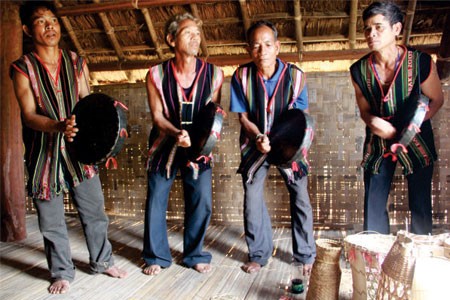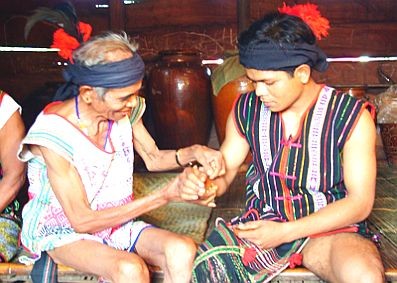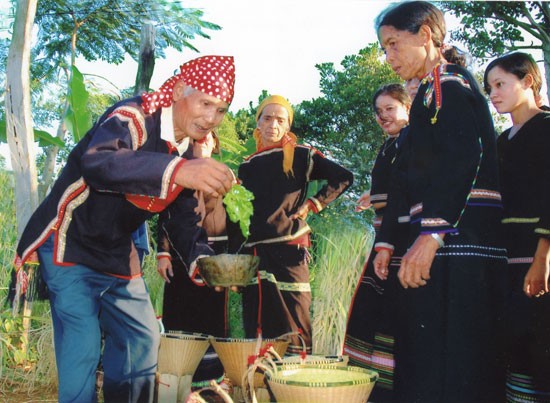(VOVworld) – The M’Nong, together with the Ba Na and Ede, are one of the oldest ethnic minority groups in the Central Highlands. They have maintained many age-old, unique cultural values and customs. Our program today will present an overview of the M’Nong.

Daily costumes of M'Nong men (photo: dantocviet.vn)
|
The M’Nong speak the Mon-Khmer language. With a population of approximately 100,000 people, they live mainly in Dac Lac and Dac Nong province and scatter in Binh Phuoc, Quang Nam and Lam Dong province. The M’Nong are divided into many branches in different localities. Luong Thanh Son, Director of Dac Lac province’s Museum of Ethnic Groups, says: “The M’Nong live densely in Buon Don, Lac, and Krong Bong districts. They are M’Nong Bu Dang in Buon Don, M’Nong Kuenh in Krong Bong, M’Nong Prang and M’Nong Gar in Lac, and M’Nong Preh in Dac Mil.”
 |
Several families of the same clan often live together in a Bon, or hamlet. Signs of matriarchy are clearly seen in their relationships. Depending on their locality, the M’Nong live in stilt houses or in regular houses. A regular house, common among the M’Nong Kuenh, M’Nong Chil, and M’Nong Prang, has a curved roof which is as close as possible to the ground. The M’Nong Rlam of Lac lake build stilt houses similar to those of the Ede. Both the stilt houses and the ground-level houses are made of wood and bamboo with a grass roof. The M’Nong often settle in flat areas and in valleys near water resources.
The M’Nong live close to nature and depend on the forest. They often say: “The forest is the roof protecting them. The forest is the home of the genies to whom they pray for help when they have difficulties.”

A longevity ceremony to honor parents' merits
|
The M’Nong have a tradition of catching and taming elephants to transport goods. A majority of the M’Nong grow terraced rice, while some living near lakes or swamps grow wet rice. Ama Phong of the M’Nong Rlam in Lac district told us: “The M’Nong Rlam, Gar, Chil, and Prang here grow wet rice. We also catch fish in the lake and hunt animals. Our customs are similar to the Ede, such as living in stilt houses, worshiping rituals, and beating gongs. Our spoken language is different from the Ede.”
After harvest, hamlets hold rituals and festivals to thank the genies and their ancestors for blessing them with good health, a good harvest, and productive animals. The buffalo sacrifice festival is their most important event, where they pray for a bumper crop.
The M’Nong have a rich cultural heritage that includes many epics, legends, proverbs, and songs. They have many types of musical instrument such as gongs, buffalo horn flutes, jew’s harps, the monochord, and a lithophone.